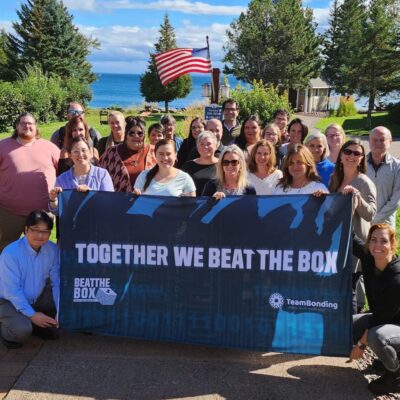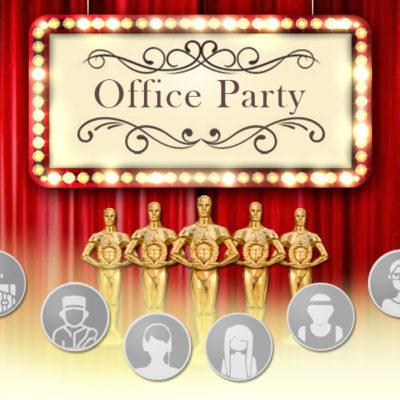Work Culture Decoded: Building a Positive Workplace Culture in 2025
Workplace culture isn’t just a trendy phrase executives toss around in meetings. Culture is the hidden force guiding how people feel, act, and perform at work. Think of it as the energy running through your organization: sometimes uplifting and inspiring, other times draining and toxic.
A strong workplace culture can energize teams, fuel innovation, and boost retention. A poor one can quietly erode trust, crush morale, and cost millions in turnover and lost productivity.
At TeamBonding, we’ve spent over 35 years helping organizations around the globe understand, improve, and transform their corporate culture. Along the way, we’ve learned that culture is never static; it’s always evolving.
In this guide, we’ll break down what work culture is, why it matters, the different types you might see, and, most importantly, how to improve workplace culture with strategies you can put into practice.
What Is Work Culture?
At its simplest, workplace culture is the shared set of beliefs, values, and behaviors that define how your team operates. It’s the “vibe” of your workplace, and it influences everything from how decisions are made to how people interact in hallways or on Zoom calls.
Corporate culture touches every part of an organization, including:
- Dress codes and office layout
- Meeting styles and communication patterns
- How leaders respond to mistakes
- Which behaviors get rewarded (and which don’t)
While leaders may try to define work culture, much of it grows organically from employee behavior, social norms, and day-to-day experiences. That’s why some executives find corporate culture frustrating: it’s not something you can pin down in a spreadsheet. Yet, it is one of the most powerful drivers of business success.
Key Elements of Corporate Culture
According to Harvard Business Review’s John Coleman, six elements shape the foundation of culture:
- Vision – The mission or purpose guiding your company. A strong vision gives employees something bigger to believe in than just day-to-day tasks. Without a clear vision, employees may struggle to connect their work to a broader purpose, which can sap motivation.
- Values – The principles that define how you achieve that vision. Importantly, values must be lived, not just listed on a website. If leadership says they value transparency but withholds information, employees quickly lose trust.
- Practices – The systems and habits that bring those values to life. This could be as simple as weekly recognition rituals that reinforce appreciation or structured onboarding programs that bring values to life for new hires.
- People – The employees you hire and the traits they embody. A single toxic hire can undermine progress, while a team of aligned, motivated employees can elevate the entire organization.
- Narrative – The story your company tells about why it exists. A strong narrative helps employees see themselves as part of something meaningful.
- Place – The physical or virtual environment where your team operates. Place also includes small cues like wall art, signage, or even Slack channels that reflect and reinforce culture.
When these six elements are aligned, workplace culture becomes a powerful force for good. When they’re misaligned, confusion and disengagement creep in.
Factors That Influence Workplace Culture
Work culture doesn’t exist in a vacuum. It’s shaped by countless dynamics inside and outside your company. Some of the most influential include:
- Leadership Style: Leaders model what’s acceptable. A manager who micromanages creates a culture of fear. A leader who listens and empowers creates a culture of trust.
- Communication: The way teams share information influences everything from collaboration to innovation. Poor communication creates silos; transparent communication creates clarity.
- Core Values: Values guide behavior when no one’s watching. If they’re only words on a wall, they mean little. If they’re practiced daily, they build authenticity.
- Norms and Behaviors: People naturally adapt to group norms. If the norm is gossip, gossip spreads. If the norm is helping peers, collaboration flourishes.
- Peer Relationships: The bonds between employees create the day-to-day reality of workplace culture. Strong relationships build resilience; toxic ones sap energy.
Why Is Workplace Culture Important?
Corporate culture may seem like a “soft” business issue, but it directly affects your bottom line.
1. Retention and Turnover
Retention is one of the clearest indicators of cultural health. A 2022 MIT Sloan study found that toxic corporate culture was the number one driver of resignations during the Great Resignation. Employees today are more willing than ever to walk away if the environment doesn’t align with their values.
The cost of turnover is staggering. SHRM estimates that replacing an employee costs 6–9 months of their salary, not to mention the loss of institutional knowledge and the burden on remaining team members. A strong workplace culture, by contrast, keeps people engaged, loyal, and invested in the long run. When employees feel respected and supported, they’re far more likely to stay and grow with the organization.
2. Productivity and Engagement
Gallup research shows U.S. organizations lose up to $20 million for every 10,000 workers due to poor well-being. Globally, disengaged employees cost $322 billion in lost productivity. Those numbers represent projects stalled, innovation lost, and opportunities missed.
When workplace culture emphasizes communication, collaboration, and support, employees feel connected to their work and each other. That connection translates into higher engagement, stronger teamwork, and greater innovation. In short, people bring their best selves to work when the culture allows them to thrive.
3. Motivation and Satisfaction
Workplace culture shapes how employees see their roles. When people understand how their daily tasks connect to organizational goals, they find greater meaning in their work. This sense of purpose fuels motivation, satisfaction, and resilience during challenges.
For example, when a company’s vision emphasizes sustainability and employees see their contributions advancing that mission, they feel pride in their work. On the other hand, when there’s a disconnect — say, leadership claims to value transparency but keeps information hidden — motivation erodes quickly. A consistent, authentic workplace culture helps employees feel that what they do really matters.
4. Brand Image
Culture doesn’t just affect employees. It influences customers, partners, and the public. A company known for treating employees poorly risks damaging its reputation and losing consumer trust. Consider how companies like Uber faced backlash due to reports of toxic culture, which not only drove employees away but also harmed their public image.
Positive corporate culture, on the other hand, strengthens your brand. Organizations like Patagonia and Warby Parker attract both employees and customers who want to be part of something bigger. In this way, workplace culture becomes part of your competitive edge, shaping not just internal performance but external perception as well.
In short: Positive workplace culture is a strategic advantage. It drives retention, fuels engagement, inspires motivation, and enhances your brand. Companies that invest in building healthy, authentic cultures don’t just create better places to work; they create stronger, more resilient businesses.
Exploring Types of Work Cultures
Work culture comes in many flavors. Some lift people up, others drag them down.
Toxic Workplace Culture
Signs of toxicity are easy to spot: gossip, bullying, low morale, high turnover, lack of trust, burnout, or leaders who don’t listen. Kim Crowder, CEO of Kim Crowder Consulting, put it plainly on our Team Building Saves the World podcast:
“We don’t use the language ‘abuse’ in workplaces a lot. We say ‘toxic work cultures.’ But if you take that behavior and you compare it to something in personal relationships, it’s the same thing, right?”
Toxic workplace cultures cost more than morale. They cost retention, reputation, and revenue.
Positive Workplace Culture
Positive corporate cultures, on the other hand, energize and empower. Hallmarks include:
- Transparent communication
- People-first leadership
- Work-life balance
- Inclusive policies
- Active appreciation
- High trust and morale
These are essential foundations of sustainable business success.They can’t be optional.
Corporate Culture Examples
Learning from real organizations can make workplace culture feel more concrete.
- Google: Known for perks like free food and nap pods, but what truly fuels its culture is mission alignment. Employees believe their work matters and share a sense of purpose.
- Facebook (Meta): The “1% finished” motto reminds employees there’s always more to achieve. This fosters boldness, innovation, and resilience.
- Warby Parker: Builds camaraderie through fun events, shared responsibilities, and small but meaningful gestures like sending random employees to lunch together.
- Buffer: Fully remote long before COVID, Buffer demonstrates that culture isn’t limited to an office. From unlimited vacation to structured 1:1s, it shows how intentional policies can strengthen remote culture.
- Uber: A cautionary tale. With a culture described as ruthless and insensitive, Uber has faced turnover, reputation damage, and financial fallout.
These stories underscore a key truth: culture is visible in the everyday choices leaders and employees make.
How Does Workplace Culture Influence Productivity?
Work culture is tightly linked to well-being and mental health: both essential for productivity.
- Well-Being: Positive cultures reduce burnout and improve satisfaction, which leads to stronger performance.
- Mental Health: Toxic cultures contribute to stress, anxiety, and depression. Supportive ones foster resilience and creativity.
- Engagement: Employees who feel valued work harder and stay longer.
Workplace culture doesn’t just influence how much gets done. It influences how well it gets done.
Building Workplace Culture in Remote and Hybrid Teams
In today’s world, workplace culture isn’t confined to a single office. With hybrid schedules and fully remote teams becoming the norm, organizations face a new challenge: how do you maintain strong corporate culture when your people rarely share the same physical space?
Remote work culture can feel fragmented without intentional effort. When communication happens mostly through screens, misunderstandings are more common. Employees may feel isolated, leading to disconnection or burnout. Even simple things like celebrating wins or mentoring junior employees require different approaches in a hybrid or remote environment.
Yet, remote and hybrid teams also open exciting possibilities. You can hire the best talent globally, create flexible schedules that boost well-being, and design cultures centered on trust rather than surveillance. The key is to be deliberate.
A few strategies to strengthen remote and hybrid workplace culture include:
- Create digital rituals. Weekly standups, virtual coffee chats, or end-of-week shoutouts help replace the casual connections of an office.
- Leverage technology with purpose. Recognition platforms, shared dashboards, or collaboration tools ensure communication stays open and transparent.
- Prioritize inclusivity. Hybrid teams must be careful not to create a two-tier culture where in-office staff have more influence than remote colleagues.
- Invest in virtual team building. Programs like TeamBonding’s Virtual Office Party or Team vs. Machine Challenge are designed specifically to help remote employees feel connected, valued, and engaged.
Strong workplace culture is about connection more than just proximity. With intentional practices, remote and hybrid teams can be just as engaged, collaborative, and innovative as those sitting in the same office.
Does Your Workplace Culture Need to Change?
Change starts with awareness. Ask yourself:
- Do gossip and rumors dominate?
- Do employees feel undervalued?
- Are leaders setting a poor example?
- Is morale low? Turnover high?
- Is communication unclear or unfair?
If the answer is yes to any of these, your culture needs attention.
But remember: culture change isn’t about perfection. It’s about authenticity. As leadership experts note, authenticity means aligning actions with values and mission. Employees respond best to cultures that are genuine, not polished facades.
How to Improve Workplace Culture
Improvement requires consistent effort and intentional action.
- Regular check-ins between managers and employees.
- End-of-meeting forums where anyone can ask questions.
- Positive norms like celebrating wins or encouraging collaboration.
- Transparent communication to build trust.
- Leaders leading by example to reinforce desired behaviors.
Team Building Activities
Team building is one of the most effective ways to strengthen culture. By creating shared experiences, you encourage communication, trust, and collaboration.
Some TeamBonding favorites include:
- Charity Bike Build – Combine giving back with building teamwork.
- Mission ImPAWssible – A CSR event with a furry twist.
- Ice Sculpting – Creative collaboration that builds relationships.
- Beat the Box – An escape-room style challenge that sparks transformation.
- Mystery Bus – Surprise activities that bring energy and adaptability.
Each program can be tailored to your unique goals, ensuring your cultural growth is as practical as it is fun.
Sustaining a Positive Workplace Culture
Culture isn’t a one-time project—it’s an ongoing process. Sustaining it means:
- Continuously reinforcing values through actions.
- Hiring people who embody desired traits.
- Checking alignment between vision, values, and goals.
- Celebrating authenticity over perfection.
- Investing in team building and professional development regularly.
Companies like Google and Warby Parker didn’t build their reputations overnight. They nurtured culture continuously, adjusting along the way.
Improve Your Work Culture with TeamBonding
Workplace culture is the heartbeat of your business. It affects retention, productivity, innovation, engagement, and even brand reputation. Employees today are prioritizing well-being and positive culture more than ever before—meaning leaders can’t afford to ignore it.
At TeamBonding, we specialize in helping organizations improve corporate culture through unique, fully customizable team building programs. Whether you’re aiming to boost morale, strengthen communication, or reinforce values, we’ll help you design experiences that leave a lasting impact.
It’s time to transform your workplace culture from the inside out. Explore our programs and see how TeamBonding can help you create a culture where people thrive.
Get more insights in our newsletter:
* every subscription supports charity!
Plays well with these activities.


 Unlock exclusive resources for better teams. Every subscription supports charity!
Unlock exclusive resources for better teams. Every subscription supports charity!
Create Your Free Account
Get exclusive access to new programs from the TeamBonding Lab, save your favorite ideas, and track your upcoming events.
Already have an account? Login











